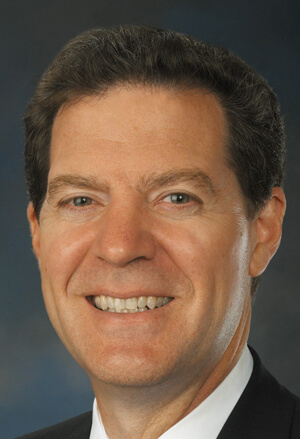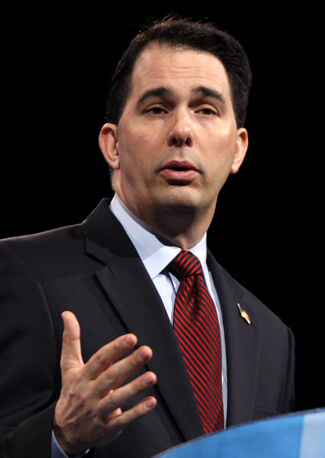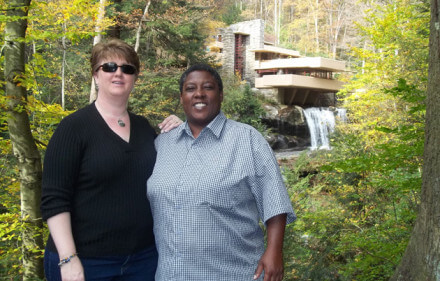As of January 1, 2013 — nine years after Massachusetts legalized marriage equality — only nine states and the District of Columbia had approved the right of same-sex couples to wed. But in the 12 months that followed, another eight followed suit, with a ninth, Utah, under a federal court order to end its ban on gay marriage, a ruling the state is appealing. In the first two weeks of 2014, yet another state, Oklahoma, faced a federal court ruling, which, like Utah, it is appealing.
So why is the effort by marriage equality advocates in Oregon to put a measure on this November’s ballot to legalize same-sex marriage a big deal?
Actually, there are a bunch of reasons. In fact, it’s no exaggeration to say that Oregon is the crucible in the 2014 push for marriage equality.
First of all, advocates there have a good shot at victory. Public polling in Oregon has yielded numbers similar to what were seen in Maine, Maryland, and Washington State in the year leading up to marriage equality’s 2012 success at the ballot box in those states. A survey conducted by Public Policy Polling in December of that year showed that 54 percent of Oregon voters supported same-sex couples’ right to marry, while only 40 percent opposed. A poll carried out four months later, in April 2013, by Davis, Hibbitts & Midghall, Inc., showed a more modest margin in favor of the issue — 49-42 percent.
By comparison, polling in neighboring Washington had support for gay marriage at 50 to 51 percent through much of 2012, though that figure was up from 46 percent a year before. Only in the final pre-election poll did the issue perform as well as 54 percent, which is just about where things ended up at the ballot box. The two major 2012 polls in Maryland showed marriage equality garnering between 51 and 54 percent support, with the final election day margin 52.4-47.6 percent. Three Public Policy Polling surveys in Maine that year showed gay marriage winning between 52 and 54 percent support, and the final margin of victory there was 53-47 percent.
The narrow seven-point spread in the more recent of the two Oregon polls — with support not quite at 50 percent — might give advocates pause. It’s significant, though, that this poll gets directly at the heart of the question, asking not simply whether voters support gay marriage, but whether they are willing to “change the Oregon constitution” to make it a reality. In 2004, voters there approved a constitutional ban on gay marriage in a 57-43 percent vote. The virtue of last April’s poll, then, was that it accounted for the hard reality that gay advocates are asking the state’s voters to once again change their constitution.
In a recent visit to New York, Mike Marshall, the campaign manager for Oregon United for Marriage, a broad coalition of pro-equality groups pushing for the referendum, acknowledged that good polling in February doesn’t necessarily translate into victory in November. In fact, recognizing that opponents may be able to focus all their firepower on Oregon — with Indiana Republicans showing signs of backing off an effort for an anti-gay constitutional referendum there in November — he estimated that advocates may need to raise as much as $12 million.
While visiting here and Washington, DC, as part of the effort to drum up that money, however, he emphasized that the Oregon marriage push is about far more than the opportunity to win in a state home to 3.9 million people.
In discussing the broader implications of the drive, Marshall pointed out that, given recent federal court victories in Utah and Oklahoma, where the states are fighting back through appeals — and the litigation underway in many other states — the question of marriage equality is likely headed back to the Supreme Court, perhaps as early as next year.
“It’s important for the court to see that the people are behind this,” he said.
Last year, the high court found that the federal government could not discriminate against legal same-sex marriages approved by the states, gutting the key provision of the Defense of Marriage Act. Given the chance to take on the broader question of a federal constitutional right of same-sex couples to marry in the Proposition 8 case, however, the justices sidestepped the issue, letting stand a district court ruling without considering its underlying merits.
Marshall is certainly not alone in seeing success in places like Oregon as critical to the Supreme Court’s considerations. Asked about the referendum push there, Michael Cole-Schwartz, a spokesman for the Human Rights Campaign, said, “Of course, the court will look at the legal arguments, and we’re confident we have the right ones. But they have to see the context, as well. At the Supreme Court, it’s imperative that we show that the nation really is ready, whether in actions by state legislatures, in overturning anti-gay amendments, or in public opinion.”
The posture taken by Cole-Schwartz and Marshall echoed views expressed in November by Marc Solomon, national campaign director at Freedom to Marry. That group’s goal is to see nationwide public support for gay marriage above 60 percent and more than half of the country’s population living in marriage equality states by 2016. Currently, just over 38 percent of Americans live in states where gay and lesbian couples can marry, and Freedom to Marry points to a Washington Post poll from last March — the most optimistic to date — that put national support for the issue at 58 percent.
The group clearly has its eye on the Supreme Court as it lays out its near-term goals. Solomon pointed to two major Supreme Court shifts — on interracial marriage and on sodomy — in talking about how the court might approach marriage equality. In the 19 years between the California Supreme Court striking down that state’s miscegenation law and the US Supreme Court doing so nationwide in 1967, he noted, almost half of the other states with laws similar to California’s jettisoned theirs, as well. The high court upheld Georgia’s sodomy statute in 1986, when 24 states still had the same kinds of laws. By the time the Georgia ruling was reversed in the 2003 Texas sodomy case in 2003, Solomon pointed out, 10 states and the District of Columbia had gotten rid of the prohibitions they still had in place in 1986.
Solomon made another point relevant in considering Oregon’s significance this year.
“We have reached a gap where we’re out of the phase of winning one state every few weeks,” he said.
In a busy year for marriage gains, he might have spoken too soon. Within weeks, favorable court rulings resulted in New Mexico, Utah, and Oklahoma. That doesn’t minimize the salience of the point he made. Nearly all the states without constitutional prohibitions on gay marriage have now legalized it, which means there are virtually no opportunities left for enacting it legislatively. Voter referendums and federal court challenges are now the primary vehicles available for making progress.
While a large number of lawsuits are underway — and Utah and Oklahoma demonstrate how federal constitutional protections work in both red states and blue states — the litigation in the courts will likely be inconclusive until the matter goes before the Supreme Court.
Solomon and other advocates have noted they might also be in a good position to go to the voters on rolling back constitutional bans in other states — Colorado, Nevada, Arizona, Michigan, and Ohio, among them. Advocates in none of those states, however, are prepared to move this year, which means that 2016 would be the next opportunity.
So, for now, Oregon is the model — and should the high court either not take up marriage in the next several years or rule that there is no federal constitutional right for same-sex couples to marry, it might be the model that many other states will have to emulate, perhaps for years to come.
Oregon is, unfortunately, a test case in one other respect. Even as advocates gear up for a very expensive fight, the opposition has come up with a way to muddy the waters. In a separate referendum drive, opponents of marriage equality, working under the name Friends of Religious Freedom, are pushing their own amendment — one that would allow businesses to decline to work with same-sex weddings and other commitment ceremonies based on their religious objections. The effort would create an unprecedented exception to the customary public accommodations requirements of law, under which organizations like businesses that deal with the general public must abide by existing nondiscrimination laws.
For Oregon United For Marriage’s Marshall, the rival referendum creates potential headaches, in figuring out how much contesting both issues might cost and in determining whether one campaign message can address both ballot questions or if two separate public relations approaches have to be developed.
“We are polling now as to whether we need one message or two,” he explained.
The new anti-gay thrust, in fact, threatens to throw marriage advocates off a successful messaging stride they’ve built on dating back to the legislative push in New York in 2011. In the early years of the marriage movement, advocates emphasized the rights and benefits — numbering more than a thousand at the federal level alone — that same-sex couples were deprived of by not being able to marry. Polling, especially that done during and after the 2008 Proposition 8 fight in California, however, found that more headway was made in public opinion by emphasizing love, commitment, and family.
Marshall, in fact, pointed with pride to the contributions that research done in Oregon in 2011 — in anticipation of a potential 2012 referendum fight that advocates chose to wait on — made in developing newer ways to talk about gay marriage.
A ballot drive focused on the fine points of public accommodations law and the rights of business owners and individuals to claim religious liberty exemptions has the potential to force the pro-gay side to return to questions of rights and responsibilities that advocates believe hold less sway with voters.
This may be no accident. The religious right has increasingly been focused on making religious liberty arguments to counter gay rights advances. In New Mexico, a wedding photography business last year lost a case in State Supreme Court claiming the right to refuse to provide services to a same-sex commitment ceremony. (As Gay City News recently reported, a town clerk in upstate New York continues to get by in her religiously-based refusal to issue same-sex marriage licenses, even after breaking her pledge to farm out all the town’s marriage licensing to a special part-time employee — an extraordinary accommodation in itself.)
The decision by the Supreme Court to hear an appeal from a family-owned business seeking a religious exemption from the Obamacare mandate on contraceptive coverage shows that the issue is part of the broader culture wars that continue to flare. Still, as James Esseks, who directs the LGBT Rights Project at the ACLU, pointed out, religious exemptions are particularly problematic in the drive for marriage equality.
“This is not a sideshow issue,” he told Reuters about the rival Oregon referendum. “This is going to be the issue that we fight about for the next 10 years, at least, in the LGBT rights movement.”
For better or worse, Oregon United for Marriage is the advance team in taking on the anti-gay right on what the community’s opponents clearly believe is an expanded battleground. Marshall, for one, is no stranger to new challenges. In 2000, he oversaw the effort to beat back Proposition 22 in California, a voter initiative to enact a law banning marriage by same-sex couples. Then — a lifetime ago in the fight for equal marriage rights — the pro-gay side was trounced by 22 points.
The situation today in Oregon, he said, couldn’t be any more different. The coalition his group has put together includes dozens of community groups and labor unions, nearly 150 religious leaders, include the state’s Episcopal Diocese, an even greater number of businesses, and both of Portland’s two professional sports franchises — the Trail Blazers and the Timbers. Nike, which is headquartered in Beaverton, has made a $100,000 donation to the fight, with its top corporate leaders kicking in an additional $180,000.
Six national advocacy groups partnering with Oregon United for Marriage, Marshall said, will each pony up at least $250,000 each.
Still, even as grassroots support grows — with more than 4,000 volunteers collecting petition signatures to get the referendum on the ballot and roughly 10,500 donors having contributed to the cause — money remains the top priority. With $2 million raised so far, Oregon United for Marriage will have to build significantly on the type of commitments Nike and the national advocacy partners have made.
To go from $2 million to $10 or $12 million is a big step up, especially in a state with less than four million residents. Marshall and his colleagues are clearly hoping that people across the nation who care about marriage equality will adopt their view on why Oregon matters so much this year.
To learn more about the efforts by Oregon United for Marriage, visit oregonunitedformarriage.org.




































